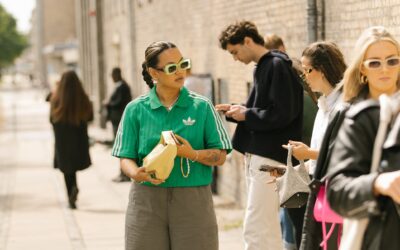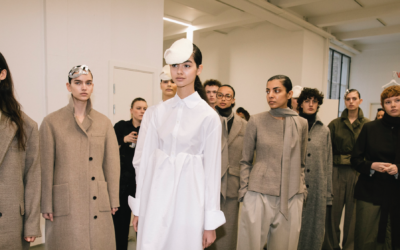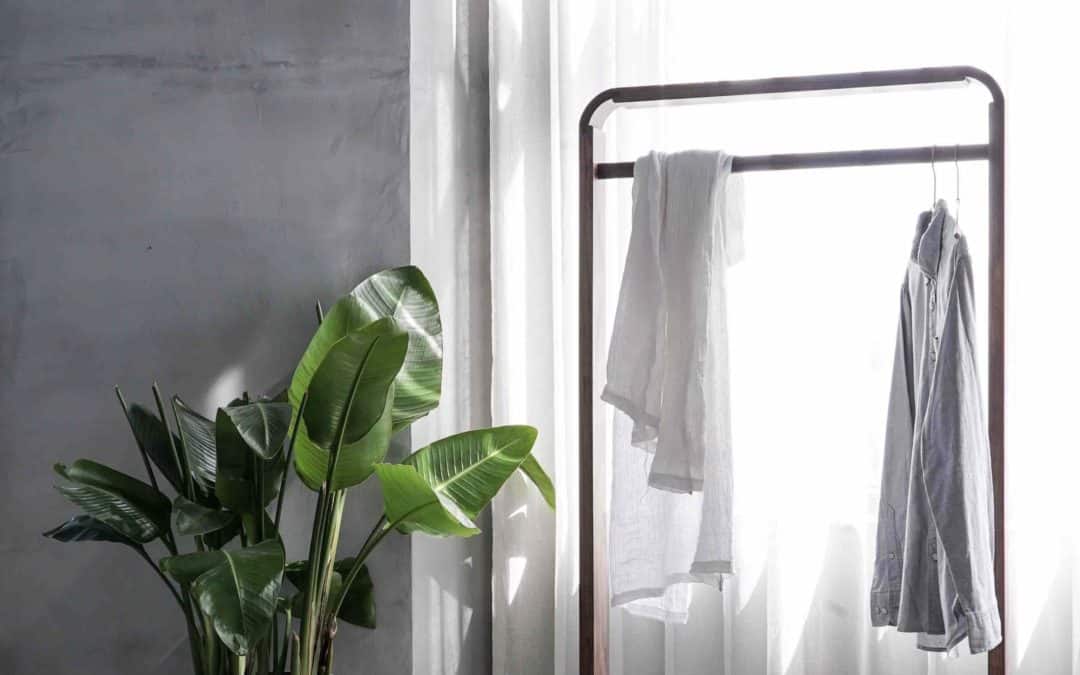Copenhagen Fashion Week is for many the culminating gathering of Scandinavian creatives. During the two weeks per year, one Spring/Summer edition and one Autumn/Winter edition, a global swarm of creatives flock around the Danish capital to get the details on the...

Influencer Marketing: An ever-changing industry that is here to stay
Influencer Marketing: An ever-changing industry that is here to stay
Today, the word ‘influencer’ is a term widely spoken about and generally tends to be misunderstood. According to the Cambridge Dictionary the word influencer has two different definitions. The first is the origin of the word, and explains that a person of influence is someone that can affect or change the way other people behave. The second definition is the occupation most of us associate the word with, a person that is paid by a company to show and describe its product or services on social media, encouraging other people to buy them.
An influencer, aka a creative, content creator and entrepreneur, is a person with the skill and knowledge of creating content that can affect people’s behavior. I would say something like: Though some may not understand the phenomenon of influencer marketing, brand ambassadors have been proven to benefit said brands by working alongside professional creatives with entrepreneurial drive, loyalty and of course, influence. By 2022, influencer marketing is expected to rise from $8 billion in 2019 to a $15 billion market, writes Business Insider Intelligence, based on Mediakix Data. Collaborating with an influencer is also a way for brands to establish new trends, which you can read more about in our previous DNA of trends article.
The ideas “reach” or “niche” are two factors to consider when deciding on what influencer to work with. Before making that decision, a brand needs to find out who their audience is, where they rank on socials and what aligning values are key drivers in the future partnership. Those components will determine if it is a successful collaboration or not. We at VOCAST have gathered ongoing and future trends when it comes to influencer marketing, that was embarking before the pandemic and also the changes that have been made in the light of Covid-19.
Vocabulary
Nano-Influencer
A niche influencer that could have less than 1,000 followers
Micro-Influencer
An influencer with a following from 3,000 – 100,000
Macro-Influencer
An influencer with a following from 100,000 and more
Collaboration
The action of working with someone to produce something, a partnership
Engagement rate
A metric that measures the level of engagement that a piece of created content receives from an audience (likes, comments, shares)
Authentic
Of undisputed origin and not a copy; genuine. The quality of being real or true
CGI
Computer-Generated Imagery
Niche
Interesting to, aimed at, or affecting only a small number of people
Alignment
An agreement between a group of people who want to work together because of shared interests
Spotted trends before Covid-19
Nano-influencers with professional access and passionate artistic skills
In the beginning of the influencer boom, a large following was the most important factor, but today the market is saturated and filled with paid, fake followers which has led to distrust from followers towards influencers with big numbers. Then, brands turned their attention to micro-influencers that have about 3,000 to 100,000 followers. As the request for authenticity got stronger, the new person holding influence is the Nano-influencer, which could have a following of fewer than 1,000 people. This genre of influencer has a high impact on their community, has a strong recommendation power and generally has a higher engagement rate on Instagram (7,2%) than micro and macro-influencers.
But why is that? According to Influencer Marketing Hub, it’s important to select an influencer that operates in the same social space as your audience as well as having the same values and culture, preferably with an expert position in their niche field. Some nano-influencers are industry professionals who just share what they actually work with and use the products in a genuine environment that is expert-approved. This is common in the field like cosmetics, athletics and interior design, says Amine Rahal, guest writer at Forbes. Kati Chirakorn at Vogue Business writes about the up and coming influencer-editor, who are editors working at popular magazines and have a big network and followers, consisting of both retailers and customers.
The other side of nano-influencers are passionate and skilled people. To work with people with a passion like stylists, photographers, designers, sculptors, dancers, writers and musicians helps brands tap into micro-cultures where the person is an advocate with their own values, creating out of pure passion and interest. It is important to have the common niche audience align with both the brand narrative and the influencer narrative for a powerful and value-adding effect.
New deals that are data-driven
Expanding platforms
From looking to listening
Audio and specifically podcasts is another niche market that is increasing in popularity and expanding its user base. With a podcast, the brand or influencer comes closer to their audience and communicates in a less formal way which breaks down barriers and a deeper relationship is established. 27% of all Americans, that is 73 million people, listen to podcasts monthly, with 85% of them finishing or almost finishing each episode. They are a great communication tool for a brand to highlight features, success stories and the brand’s benefit’s by collaborating with a niche podcaster.
Virtual influencers
Co-creators and communication experts
Another expert in the field is the platform, Instagram. They’ve been a part of creating and shaping the influencer market as it is today. Instagram’s new “Branded Content Ads tool” allows a business to “share their story from a creator’s point of view and use the authentic content in their ads”. This means that a brand can share and promote a creator’s post in stories and peoples’ feed as an ad, reaching beyond the creator’s own followers. This will give Instagram an even more important role as a third party in the relationship brand-creator.
Spotted trends in effect of
Covid-19
From employee to brand ambassador
The realization of long-term partnerships
A is for Authenticity
The classic influencer lifestyle with sponsored travels and sparkling events haven’t just been canceled, it has become irrelevant in the light of an ongoing pandemic. This “naked” and forced approach has sparked creativity for both brands and influencers and has led the way to more authentic partnerships being sealed. A match between brand and creator, made as a mutual adoration of each other’s skills, designs and talents. A close and organic relationship can help and works as a safety net that “can drive conversion even when ads aren’t running as normal” – says Kaleigh Moore at Vogue Business.
Industry perspective
Eleonora Milella
@eleonoramilella
Micro-influencer from Turin, Italy.
Digital content creator.
Does collaborations with several Italian fashion and beauty brands
Victoria Bond
@victoriabond007
London based Make-Up Artist.
Industry professional.
Have been featured in British Vogue, Elle, L’Officiel
Have you noticed any changes in how brands approach you in the last couple of years?
Eleonora: “The most evident difference in fashion brands’ approach to us content creators, is undoubtedly linked with the authenticity and spontaneity of the content creation process: Brands are no longer giving guidelines, but instead leave it to the creators to express and narrate the stories in the way he/she thinks is best. It’s precisely based on these ways of being and communicating that brands choose who to work with on social media.”
Victoria: “My relationships with brands tend to be organic. I will have worked with them for many years as a makeup artist and built up a strong relationship. I have noticed that more brands want authenticity and industry professionals. I think this is because the general public are realising that influencers are paid to say they like a product so don’t feel it’s genuine. Obviously this isn’t always the case but does tend to be the norm.”
When you create content for brands on social media, have you experienced a shift in audience engagement?
Eleonora: “Linking back to the answer of the previous question, my followers have never asked me to change: I’ve chosen to gradually adopt a less “polished” approach to content, such as more authentic photos with imperfections, which then have received appreciation. In this way, I insert a product in an authentic context linked to everyday life. I think this approach has reached a peak now “thanks” to the times that we’re living: we found ourselves stuck in our homes without seeing the world that surrounds us, still having to use our minds to create. And what better location to narrate our everyday lives than our houses?!”
Victoria: “I think it’s harder to engage an audience. Instagram has a tendency to tinker with algorithms although if I’m honest I don’t know what that means. I just know it’s hard to get content seen to a wider audience. Any content I do create is purely because I think the products are great and I want to share the love/knowledge. I don’t receive any payments for this only products which are for my kit. Any products I recommend are tried and tested first on multiple people so I know it works!”
What does the future hold for you? Are you optimistic about what the influencer industry has to hold for creatives and artists?
Eleonora: “In the future I hope to continue to work in this industry, I find it stimulating and full of challenges. I’m optimistic because I believe there is always room for creativity and communication. We all want to feel inspired and inspire, and this industry allows us to do so.”
Victoria: ““I think it might be the return of the expert rising like a Phoenix from the fire. A lot of professional Makeup Artists have been ignored or overlooked by some brands in favour of ‘influencers’ without a professional background. Although I definitely think there’s room for everyone as I do understand that an non expert can speak to people too. I just worry that their content can be technically incorrect and can lead to worrying trends. They also put on far too much makeup which is really misleading to the average woman looking for advice!”
Say whatever you want, influencer marketing is a creative asset for brands that’s here to stay. The role, format and expression, as we know it, will change as technology, social media platforms and the audiences’ demands and values evolve. But, the benefits from having a communicative expert and a friendly face connected to your brand will build vital interacting relationships. Consider digging into up and coming nano-influencers, videos on TikTok and long-term creative partnerships to stay up to date and relevant with future marketing initiatives.
Image credit: Unsplash
Our lifestyle researchers constantly create and update curated lists with handpicked media, experts and high profile contacts from the fashion, home interior and lifestyle industries in 10 different markets. We provide contacts from Denmark, Sweden, Norway, The UK, The US, France, Germany, The Netherlands, Belgium and Italy.
SIGN UP TO OUR NEWSLETTER
Get free knowledge on how to optimize your B2B marketing & new product releases.
RELATED POSTS
A Closer Look at Copenhagen Fashion Week 2024: Insider’s Insight
Sweat and Style: How Fashion Brands Can Ride the Sports Wave
We’ve seen it time and time again: another collaboration between a fashion brand and a notable figure in the sports and fitness world. Whether it be your favorite influencer dressed head to toe in athleisure or loyal fans sporting (pun intended) their favorite...
Cracking TikTok’s Trend Code: How Brands Can Flourish on TikTok
In the ever-evolving landscape of social media, TikTok stands out as a dynamic platform where trends rise and fall in the blink of an eye. For brands, aiming to make their mark in this digital space and navigating TikTok trends and aesthetics while staying true to...















